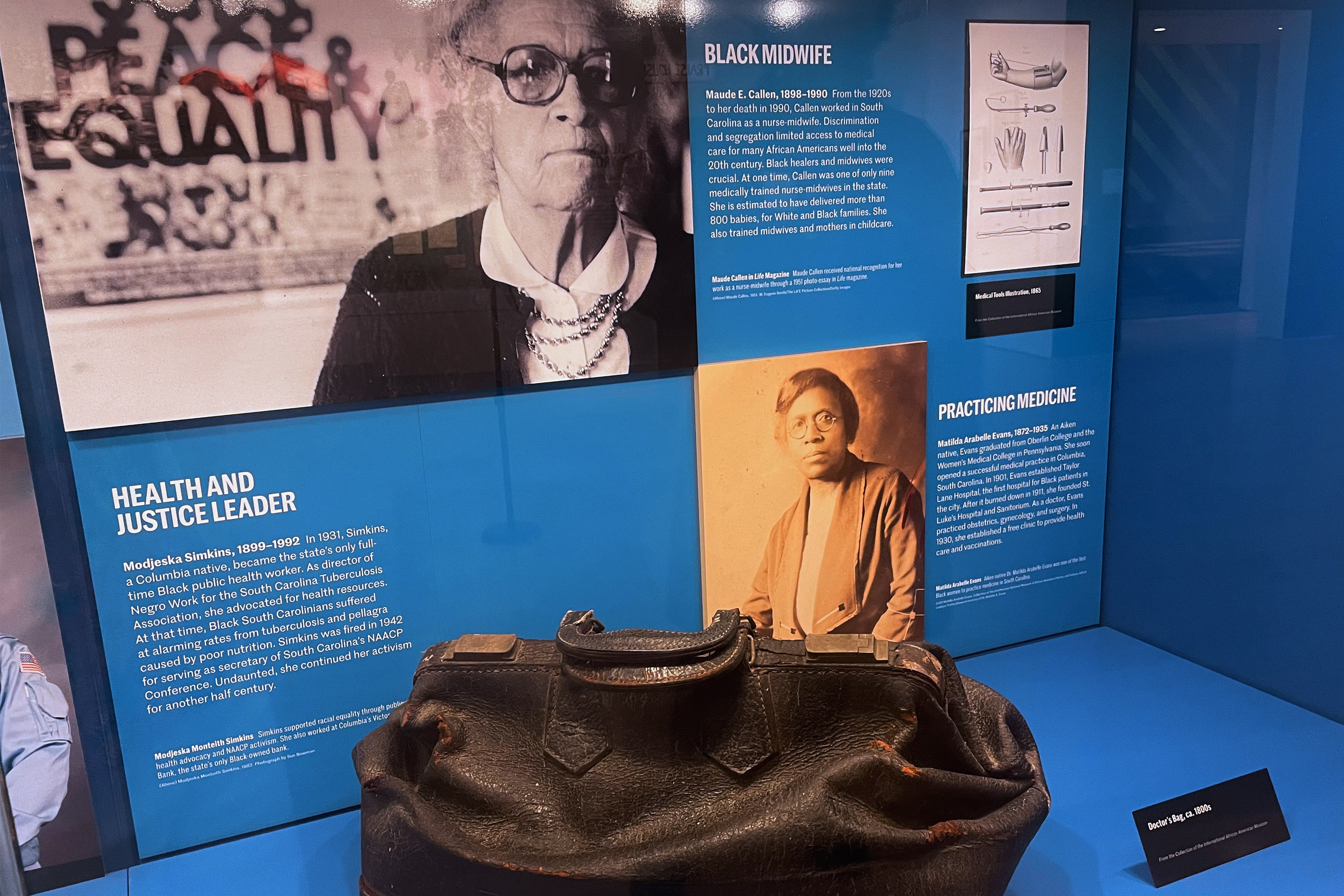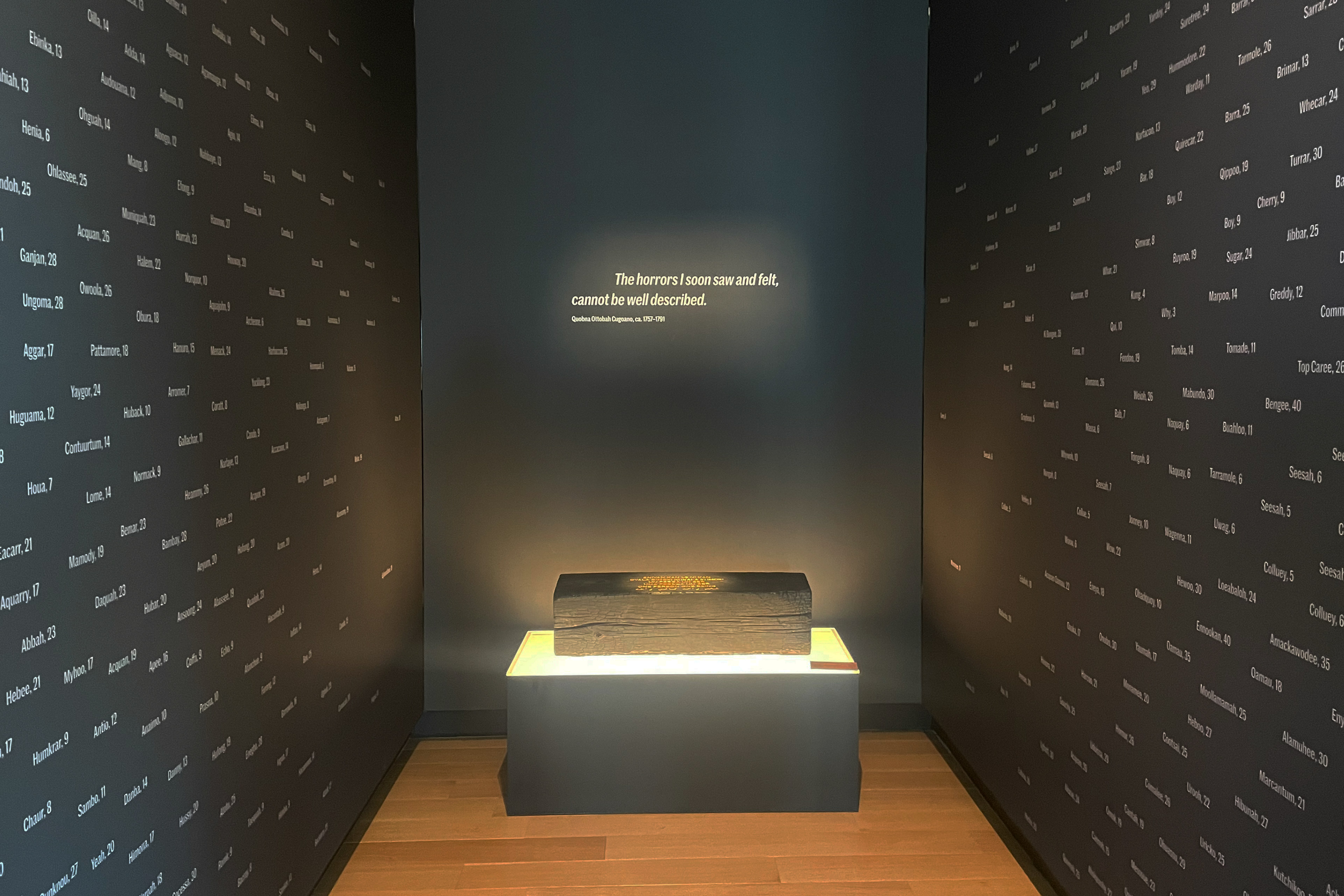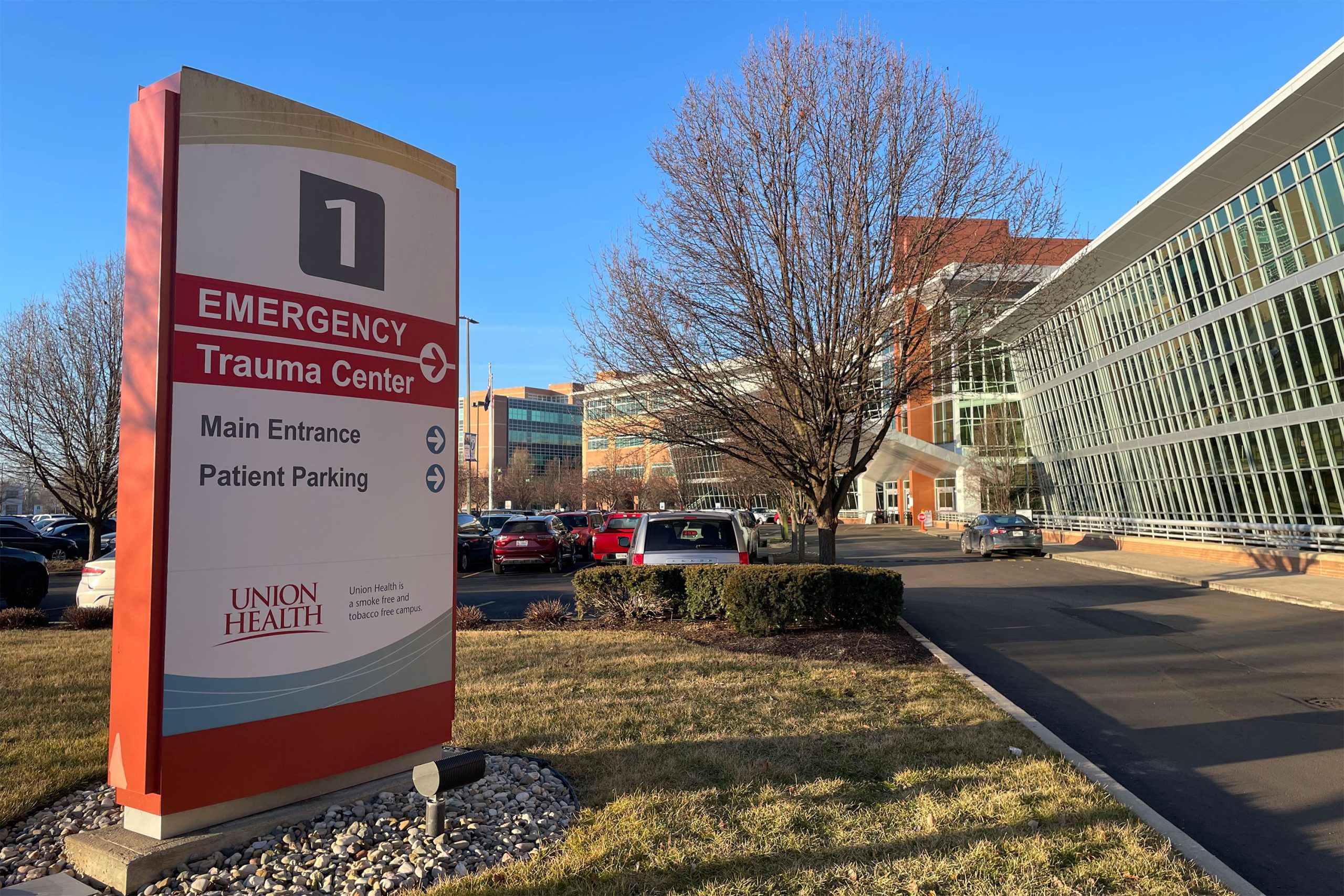CHARLESTON, S.C. — Maude Callen, a Black nurse-midwife, delivered more than 800 infants across the South Carolina Lowcountry starting in the 1920s, when segregation made it difficult for Black people to get medical care.
Although Callen isn’t commonly considered a household name, visitors passing through the new $120 million International African American Museum that opened this week will learn about her work.
The Callen display serves as both a celebration of Black achievement in medicine and a reminder that the origins of modern-day health disparities are rooted in history and racism. More than 100 years after Callen launched her midwifery career, South Carolina remains one of the deadliest states for Black mothers and babies and continues to battle troubling health inequities.
“We want to constantly cause people to recognize that there isn’t that much distance between past and present,” said Felice Knight, director of education at the new museum, which was more than 20 years in the making.
The galleries span centuries of trauma and triumph. But what sets this museum apart from other sites dedicated to Black history is its location. It is built on Gadsden’s Wharf — where tens of thousands of enslaved Africans first stepped foot in America after their capture and two-month transport across the Atlantic Ocean.
“That fact alone makes it probably the most significant landing spot for Africans in North America,” said Nic Butler, a historian for the Charleston County Public Library.
During the two years leading up to 1808, when the importation of enslaved people from foreign countries to the United States became a federal crime, it’s likely more Africans were sold into slavery at Gadsden’s Wharf than at any other site in America, Butler said. Other states had already made the importation of slaves from Africa illegal; South Carolina was the last holdout.
“It was peak madness of the African slave trade in North America,” he said, adding that the health of enslaved people at Gadsden’s Wharf “totally deteriorated” during those years.
Once in Charleston, Africans died in such large numbers from disease, exposure to cold, malnutrition, and physical trauma, Butler said, that local lawmakers passed an ordinance in 1805 establishing fines for anyone caught dumping the bodies of Black people into Charleston Harbor.
A line can be drawn between what transpired at Gadsden’s Wharf more than 200 years ago and health outcomes observed among Black Americans today, historians and health care providers say.

Thaddeus Bell, a North Charleston family physician and founder of the nonprofit Closing the Gap in Health Care, attended the museum’s groundbreaking. When he visited Gadsden’s Wharf, he said, he couldn’t help but think of his Black patients, many of whom suffer disproportionately from cancer, cardiovascular disease, and diabetes.
Research published in JAMA last month found that Black people in the U.S. experienced 1.63 million excess deaths from 1999 to 2020, representing 80 million years of potential life lost, compared with white Americans. African Americans today have higher infant, maternal, and cancer mortality rates, and overall mortality rates, compared with white Americans, according to KFF.
“You think about all of the health issues that Black people did not get the appropriate care for, all of the racist doctors we had to deal with,” Bell said. He said he wished museum leaders had done more to focus on health disparities. “The medical system was just stacked against us. It’s just heartbreaking.”
It’s common for historians who study health disparities to link current health outcomes to the past, said Kevin McQueeney, an assistant professor of history at Nicholls State University in Louisiana and author of “A City Without Care: 300 Years of Racism, Health Disparities, and Health Care Activism in New Orleans.”
McQueeney cited research in his book estimating huge numbers of Africans captured in their homeland died from disease or trauma before ever boarding a slave ship. Up to 20{dec8eed80f8408bfe0c8cb968907362b371b4140b1eb4f4e531a2b1c1a9556e5} of those being transported died during the Middle Passage, he said. Then, thousands more men, women, and children who’d survived up to the point of being sold would die within the first 18 months of arriving in America. Those who didn’t die would likely suffer from a variety of health ailments related to respiratory illness, malnutrition, and physical injury for the rest of their lives, he said.
Health disparities have persisted over generations for a variety of reasons, including poverty, racism, and genetics. “In a lot of ways, these are the legacies of slavery,” McQueeney said.
Museum architects designed the building and gardens with this trauma in mind. Small, quiet rooms near the main gallery allow visitors to sit and privately process their grief. A sign in the memorial garden designates the site as a “sacred space” — an acknowledgment that the experience of visiting Gadsden’s Wharf may be difficult, even traumatic, for some people.
“I want people to feel the sorrow, the pain, the burden of the history of the site,” said Walter Hood, a California landscape architect whose studio designed the outdoor space. At the same time, he said, he doesn’t want visitors to consider Gadsden’s Wharf a memorial to the dead.
“It’s almost like Plymouth Rock when you think about it. It’s a place of arrival,” he said. “We are still here.”










